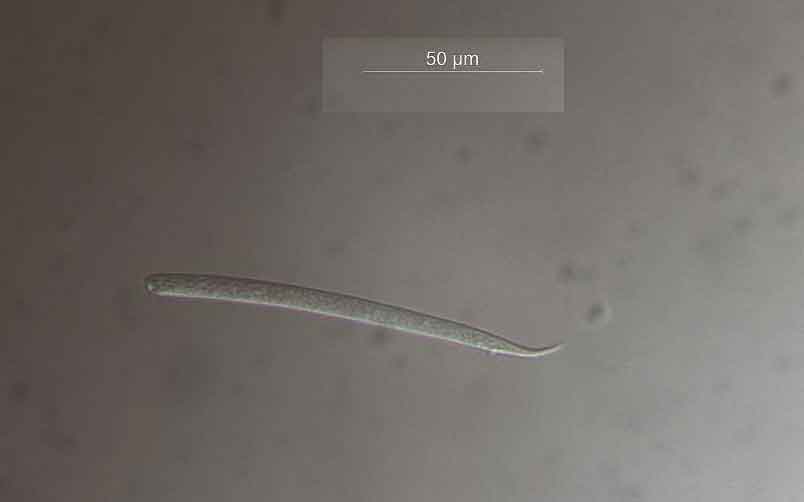Onchocerca
(Onchocerca lupi))
Onchocerca lupi is a spirurid helminth of dogs, which also infects cats and wolves. Biting midges are suspected vectors, but a definitive proof of their vector competence is currently lacking. It is zoonotic.
| Parasite: Onchocerca lupi |
| Common name: Onchocerca |
| Hosts: Dogs, wolf, cats, humans |
| Pre-patent period: Unknown |
| Location of adults: Subconjunctiva and retrobulbar space |
| Distribution: United States, Europe, Asia and Africa |
| Transmission route: Unknown vectors (black flies?)[1] |
| Zoonotic: Yes |
Distribution
Onchocerca lupi has been reported in subtropical regions including the southern United States, Greece, Portugal, Romania, Turkey, Tunisia, and Iran.
Clinical signs
Most O. lupi-infected dogs remain asymptomatic, showing no apparent clinical signs. Some dogs may present ocular lesions, including ocular nodules that are often evident on the eyelids, conjunctiva, and sclera (Fig 1).
Diagnosis
The diagnosis of O. lupi infection in dogs is based on the detection of characteristic microfilaria in skin snips (Fig 2) and/or on the identification of adult worms recovered from ocular nodules. Imaging tools (e.g., ultrasound scan, computed tomography and magnetic resonance imaging) may be used for detecting the presence of adult worms in anatomical regions that cannot be easily accessed during routine ophthalmologic examination.

Figure 1 Subconjunctival masses containing Onchocerca lupi. (Image credit: Dr.D. Otranto and coworkers, DOI: 10.1186/s13071-015-0699-3)

Figure 2 Onchocerca lupi microfilaria. (Image credit: Dr. R. P. Lia)
Treatment
The only effective treatment for canine onchocercosis demonstrated so far is the surgical removal of adult worms from accessible nodules (Fig 3).

Figure 3. Surgical removal of a subconjunctival mass containing Onchocerca lupi. (Image credit: Dr..D. Otranto and coworkers, DOI: 10.1186/s13071-015-0699-3)
Control
As the mode of transmission of this enigmatic parasite remains unknown, no effective control measure has yet been proposed.
Public health considerations
After the first evidence of human infection by O. lupi in Turkey, new human cases have been described in Tunisia, Germany, Hungary, Greece, Portugal, Iran and the United States. Human patients usually present painless subconjunctival nodules which require surgical intervention. Interestingly, American patients have not had subconjunctival nodules but spinal, orbital, and sub-dermal nodules
References
[1] Hassan HK, Bolcen S, Kubofcik J, Nutman TB, Eberhard ML, Middleton K, Wekesa JW, Ruedas G, Nelson KJ, Dubielzig R, De Lombaert M, Silverman B, Schorling JJ, Adler PH, Unnasch TR, Beeler ES. Isolation of Onchocerca lupi in dogs and black Flies, California, USA. Emerg Infect Dis. 2015;21:789-79696.
